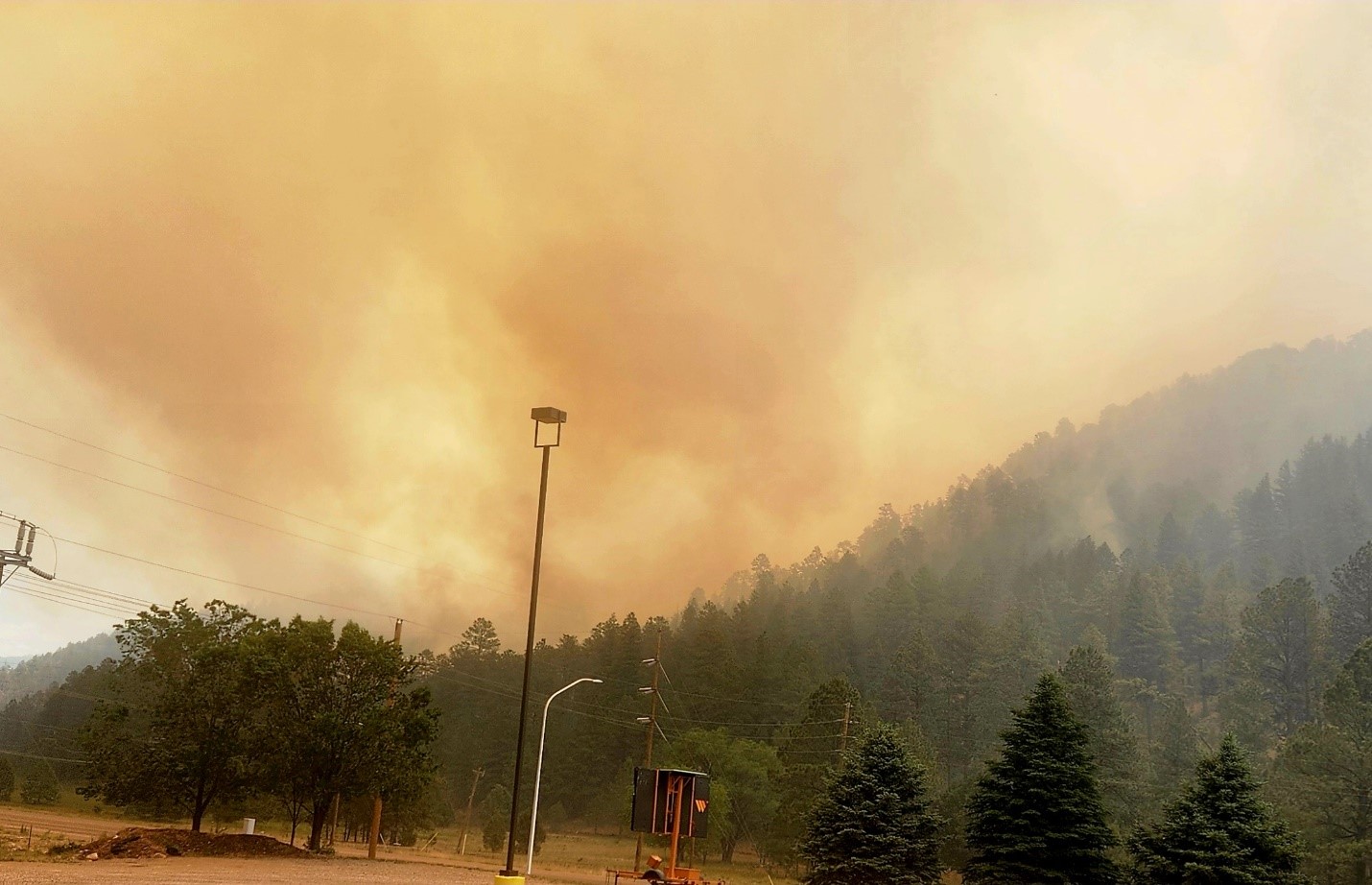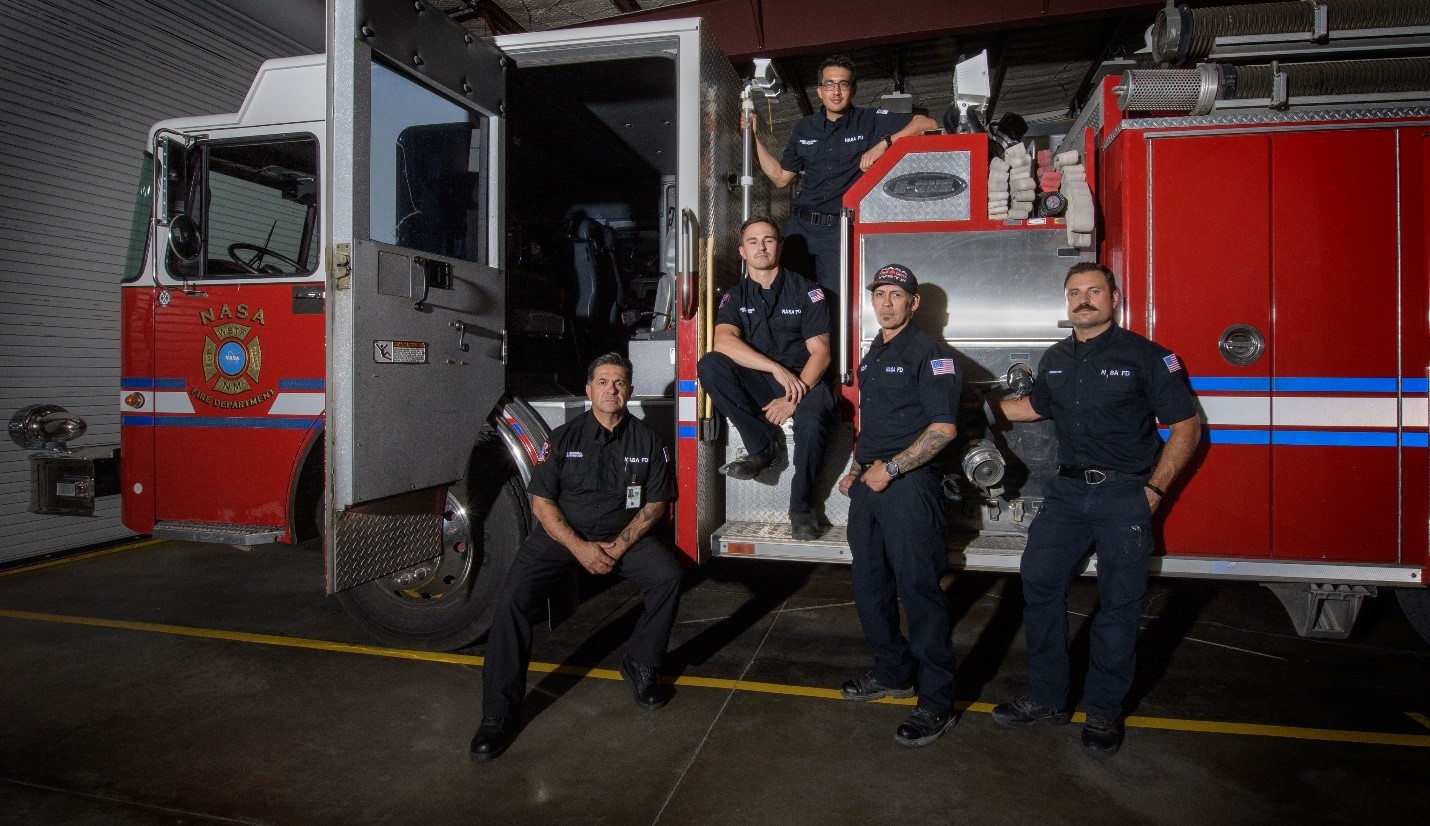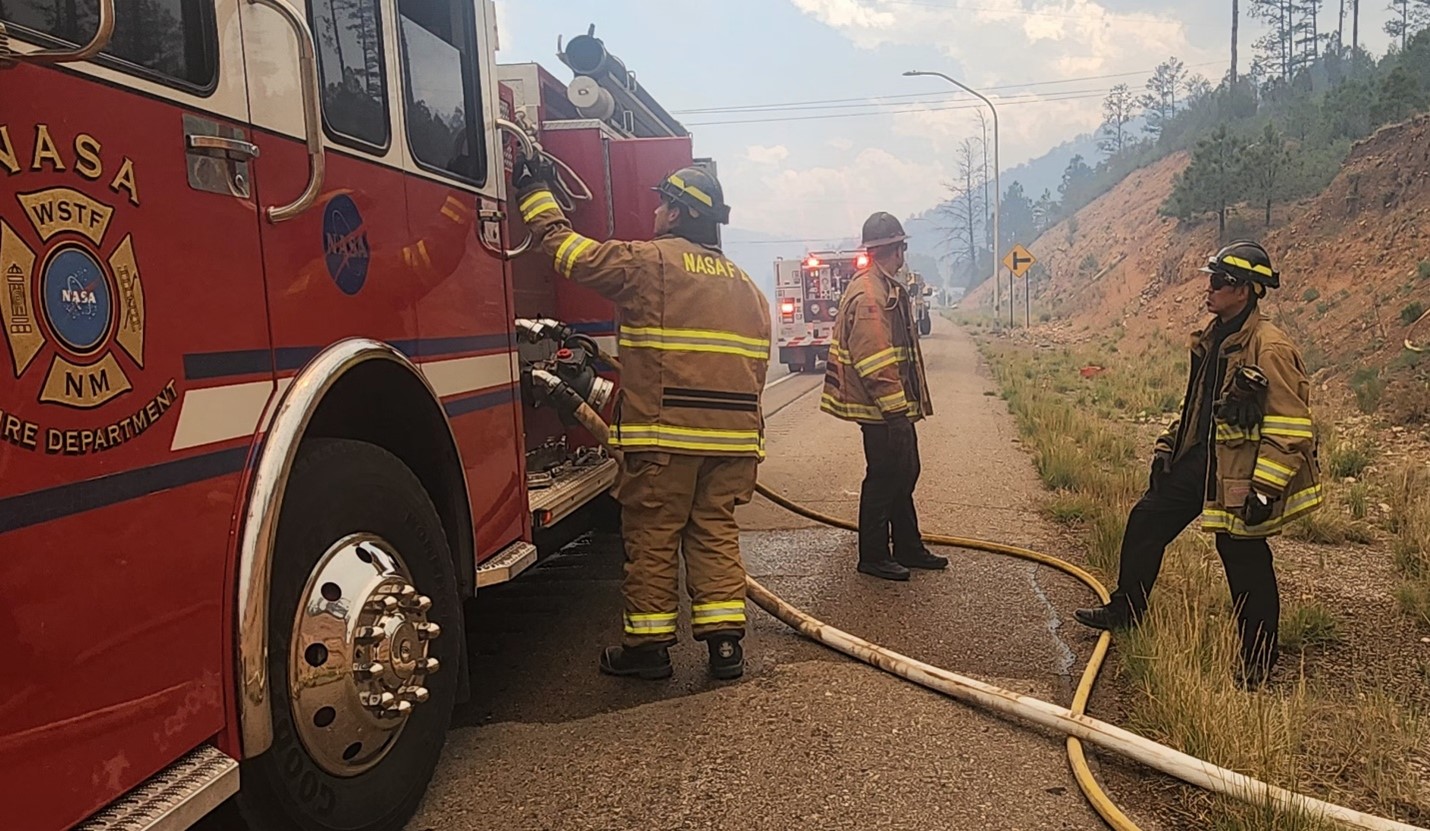Ruidoso, New Mexico lay in an unusual hush on June 20, 2024. During any normal summer day, the village in the southern part of the state lives up to the Spanish translation of its name - noisy.
But the bustle of this vacation hotspot, which attracts nearly 2 million visitors each year, was stifled by a mandatory evacuation order issued as wildfires raged unchecked across Lincoln County and the Mescalero Apache Reservation. After four days of fires, news of the disaster began spreading to surrounding communities.

At NASA's White Sands Test Facility (WSTF), Fire Department Deputy Chief James Herrera and his team were on high alert from the moment the blaze began.
"There were so many rumors, so many things going on," Herrera said. "People were saying the town was completely burning down. We were expecting the worst before we even got there."
Herrera's expectations were realistic.
Tinderbox conditions, rough terrain, and winds reaching more than 70 miles per hour fueled the flames raging at the South Fork area west of Ruidoso, devouring nearly 5,000 acres just hours after the fire started.
As first responders expended every resource available to them both on the ground and in the air, a second fire - the Salt Fire - broke out on tribal land south of the village.
Now the twin infernos closed in on Ruidoso like a set of jaws poised to snap shut.
Gov. Michelle Lujan Grisham quickly declared a state of emergency and the early whispers crescendoed into an urgent plea for aid from anyone who would listen.
There was no doubt in Herrera's mind: WSTF, based 150 miles from Ruidoso in Las Cruces, New Mexico, would answer the call.
"Never once did [WSTF leadership] say 'Sorry, we can't help,'" he said. "They asked, 'What can we do to help? How can we get there as soon as possible?'"
Shift changes made for an earliest possible departure at dawn on June 20. The WSTF Fire Department spent the night preparing their truck, gathering their belongings, and bracing for the uncertain.
"We didn't know where we were going to sleep, there were no hotels, everything was closed," Herrera said. "More than likely, we were going to end up sleeping in our engine."
For the moment, rest was off the table.
"I'm not going to lie, we probably didn't even sleep. I know I didn't," Herrera said. "I closed my eyes, and it was two o'clock in the morning. Time to get going."
After checking in at the Incident Command Post, Herrera and the WSTF team - Lieutenant Gary Sida, firefighters Steven Olsson and Gabriel Rodriguez, and driver and engineer Tommy Montoya - were deployed to Ruidoso's Casino Apache Travel Center off Highway 70.

When Herrera and his four-man crew reached the edge of the deserted mountain town, the silence was more than unusual. It was unsettling, as heavy as the smoke suffocating the Sierra Blanca Peak.
"You could not see more than 100 feet," Herrera said. "The only sign of life was all the fire agencies that were there. It was an eerie feeling."
NASA's arrival on scene brought a shift from anxiety to optimism and relief.
"There were tears in some of their eyes because we were showing up to help," he said. "I could hear people saying, 'What's NASA doing here?'" He added, "One gentleman asked us how we got there. I joked that we drove the whole line from Kennedy Space Center."
By the afternoon, the light-heartedness among comrades was extinguished as escalating winds charged the situation to a fever pitch. The fire, once perched atop the mountains, began hurling down in a landslide of embers, leaping across Highway 70, and forming a nearly complete ring of danger.
Breathing grew difficult as ground crews, with aerial units roaring overhead, battled a relentless assault of heat. WSTF Fire Department's assignment evolved into an effort to protect anything and everything within reach. "It makes you realize how fast something can be taken away from you," Herrera said.

Though disaster descended in an instant, the day itself had been long. Herrera and his team were released from duty after a grueling 12 hours spent providing critical support to wildland units and successfully protecting nearby buildings.
"Once it starts to calm down, you can feel your hands start to shake a little bit because this thing was getting out of control really fast," Herrera said.
By the weekend, containment efforts were gaining ground thanks to the efforts of a combined 780-strong emergency response force. Eager to rebuild, Ruidoso residents trickled back in, but the village soon encountered another challenge: rain.
Following the South Fork and Salt fires - which claimed an estimated 25,000 acres, 1,400 structures, and two lives - monsoons battered Ruidoso. Throughout July, deluges washed over the region's burn scars in an ironic insult to injury leaving people trapped in vehicles and homes underwater. As recently as Aug. 7, evacuations continued as the Ruidoso Police Department worked to preemptively clear the Cherokee Mobile Village due to past flash flooding in the area.
In this harsh landscape of crisis and aftermath, Herrera views mutual aid as more than a tactical response, but a vital investment.
"Building goodwill with the community is akin to cultivating fertile ground for growth and success," he said. "I strongly feel it strengthens the bond between us and our community."
With the wet season expected to continue through the end of September, Ruidoso's forecast remains uncertain. Even as storm clouds gather, one thing is clear: if the call comes again, the WSTF Fire Department will always be ready to answer.






